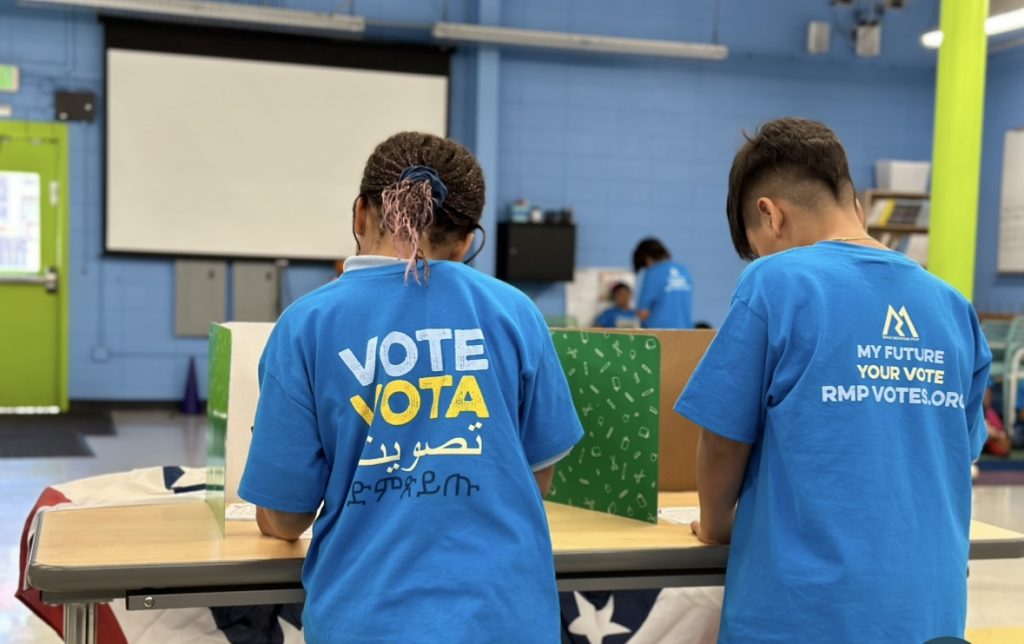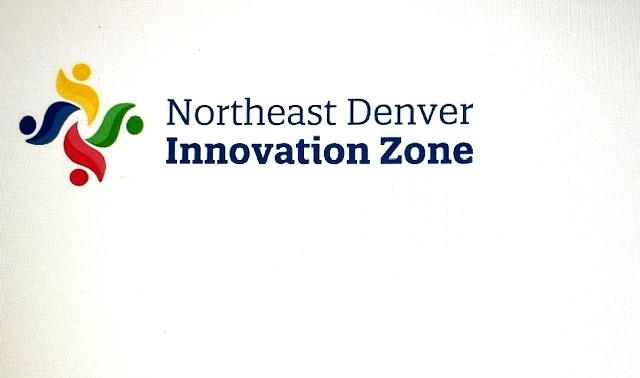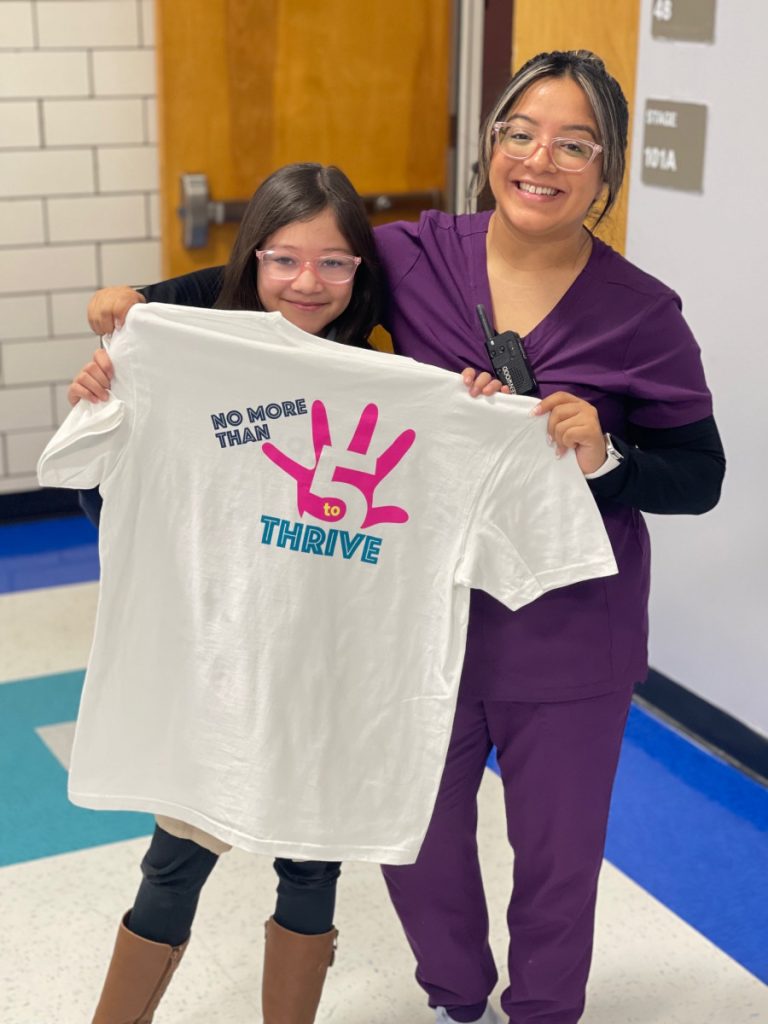The impending merger of Rocky Mountain Prep and STRIVE, two of Metro Denver’s most successful charter school networks, is the most consequential change in the city’s charter sector in many years, if not ever.
It also represents an acknowledgement that the area’s demographic and political landscapes are shifting. The merger, which takes effect next August, makes sense in that context, and also for a host of logistical reasons, leaders of the two organizations say.
But the most important factor driving the merger is the needs of students and their families. Rocky Mountain Prep and STRIVE leaders believe families will be better served by having a seamless ECE-12 pipeline for hundreds of students. Rocky Mountain Prep operates four ECE-5 schools, and STRIVE runs one elementary school, seven middle schools and two high schools in the Denver metro area.
Boardhawk recently interviewed Rocky Mountain Prep CEO Tricia Noyola – who will head the new organization beginning next year under the STRIVE banner – and Jessica Johnson, STRIVE’s interim CEO for the 2022-23 school year about the merger, its origins, logistics, and what families can expect this year and next.
The interview has been edited for length and clarity.
Boardhawk: How, when, and why did merger conversations begin?
Tricia Noyola: Conversations around network size, declining enrollment, and the best way to meet our family’s needs have been happening since I got here in May 2021 [when Noyola replaced RMP founder James Cryan, who moved out of state]. Demographics continue to change. Our context within the Denver Public Schools district continues to change.
So we have been asking: What is the future going to entail? What is the best way to keep serving the families we’re serving but improve on quality? How do we make sure that we’re putting our resources where they matter most, which is in front of students?
[Recently departed STRIVE founder] Chris Gibbons and I began conversations in the winter, around what it would look like in terms of an ECE-12 pathway between our schools. Two Rocky Mountain Prep schools are located either in the same building (Kepner, in southwest Denver) or right down the street (Sunnyside, in northwest Denver) from a STRIVE school.
So there’s already a lot of natural overlap between our families and the communities that we’re serving and who we’re working with. And my background in Austin Texas was running an ECE-12 network.
It makes sense to run a network that runs ECE-12 in terms of continuity. You’re able to align the curriculum and program experience for kids and families the whole way through, which ultimately nets a much stronger outcome for the child.
Jessica Johnson: Strive was founded 17 years ago. RMP was founded 10 years ago, and the needs and the educational landscape have evolved and changed since then. We are aligned in a lot of different ways and by coming together, we can provide the kind of quality educational opportunities that our students and communities and families deserve while putting more resources back in front of the classroom by combining some of the back office operational stuff that consumes resources.
Boardhawk: In recent years the district and the school board have become more openly skeptical about charter schools. Did this new reality in any way add urgency to the merger conversations?
Noyola: I can honestly say for me the answer is no. It was not the impetus. And to be honest, we’ve had conversations with the superintendent and different school board members, and they’ve been really supportive.
Johnson: That also was not a consideration for STRIVE. I think it’s safe to say that both STRIVE and RMP are proud members of the DPS portfolio of schools. We partner with DPS in a lot of different areas. They provide services to us and we have a great working relationship with all of the DPS departments that we work with.
Boardhawk: What kind of feedback have you gotten from families so far?
Noyola: One of the biggest motivations to do this came from our Rocky Mountain Prep families. For years, they’ve wanted us to either open RMP middle schools or to provide a better option so that they can be assured of the same level of quality and experience that they’ve been getting at RMP. And so the reaction from our families has been really excited. They are interested to learn more and curious as to how we’re going to align the curriculum experience and the programmatic experience ECE through 12th grade.
Johnson: We did a process at STRIVE this spring called Our Hopes and Dreams and we had members of our board, members of our staff meet with different stakeholder groups, including groups of parents and students and overwhelmingly what we were hearing from our families was they really want strong academics. They want strong programming and many of them spoke about wanting that clear K through 12 pathway.
Our families and our communities wanted us to be able to look to the future of STRIVE with a focus on strong academics, more electives, preparing our students for college and, and building on the foundation. Pairing with Rocky Mountain Prep and Tricia’s strong academic leadership experience was really answering the call that our families and our communities have made.
Boardhawk: And what kind of feedback have you received from your staffs?
Noyola: It’s different on the RMP side than at STRIVE. I’m a known entity to our folks and when I came in as CEO, there was a lot of change already. So on the RMP side. What I’ve heard from staff is, “That’s great. I’m preparing to teach my phonics lesson tomorrow.” So I don’t I don’t think there’s as much of an unknown variable or quality.
I don’t think this was shocking to any of them. For the most part, our folks have been really excited. People naturally have questions: How’s this going to impact me? But the overall response has been, “that’s really exciting.”
Johnson: It’s been a little bit different on the STRIVE side. That partly is because Chris Gibbons, after 17 years, is transitioning out. So I’m in the position of living in the shadow of a founder and I couldn’t be more different than Chris and my approach to leadership and management is probably very different from his as well.
We’ve had three staff town halls and overall, the reception has been really enthusiastic. Folks are really excited for the opportunity for growth and the opportunity for getting better at expanding opportunities for our students.
There are also a lot of questions. I would be disingenuous if I didn’t say there are some folks who have raised concerns, some who have a lot of questions, and change management is really hard, especially when it’s coming from someone new.
Boardhawk: As you begin this process, what do you see as the biggest areas of alignment and the biggest areas of divergence in philosophy and approach?
Noyola: There’s a lot of alignment between the families that we serve, our missions, why we were both started, why we continue to exist and what we want to bring to the families and the communities that we work with. Both networks are interested in providing kids with rigorous curriculum experiences, making sure that they’re achieving at really high levels so they can live choice filled, liberated lives.
STRIVE is older than RMP. So I think there are a lot of lessons and iterations they’ve been through that we necessarily haven’t. And so we rely a lot on that and their wisdom in a lot of areas.
There are incredible people working at both organizations who believe deeply in the work and in the power and the potential of this idea. And I think when you have that, any areas of divergence can be figured out and worked through, because at the end of the day, we’re both coming to this work and we’re both coming to the table for the same reasons.
Boardhawk: What are you most excited about and what keeps you up at night about working toward and executing this merger?
Noyola: What I spend most of my time thinking about in general is making sure that we’re delivering on the promises that we made to families when they enrolled in either network schools. What keeps me up at night metaphorically is that as a sector we haven’t consistently delivered on those promises.
I’m constantly thinking about how we are right now operating as two separate organizations fulfilling, to the best extent possible, the promises that we made to our families when they enrolled? How are we making sure that what we are offering is of the highest quality academically, emotionally, culturally? I want to make sure that we are confident that we are offering the best; that when a family enrolls at a STRIVE school it is the best option bar none for their children.
Change management is critical and it’s really hard. I want to make sure that we are treating all folks – our families, our scholars, our staff – with dignity and grace, and that we’re making this as open and as transparent and iterative a process as we can while respecting all the people currently in our networks attending our schools and who care very deeply about the direction we’re going.
Johnson: STRIVE is 17 years old. We are essentially a teenager about to become a young adult. We have the opportunity to look inward and say, some things that may have worked 15 years ago don’t work now. There are opportunities for a fresh look. There are opportunities for folks who have been here for a long time to share their experiences, share what has worked well, share what they may have wanted to do differently.
That gives us a really great opportunity to build on the things that we’ve been doing well and change the things that maybe we haven’t been doing as well.




